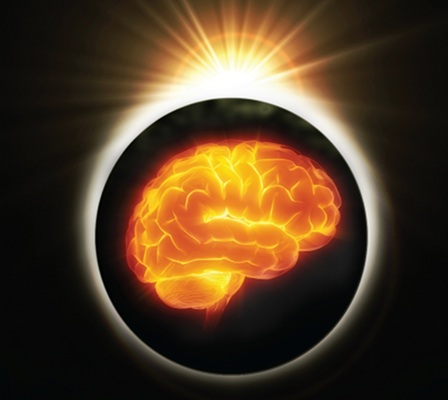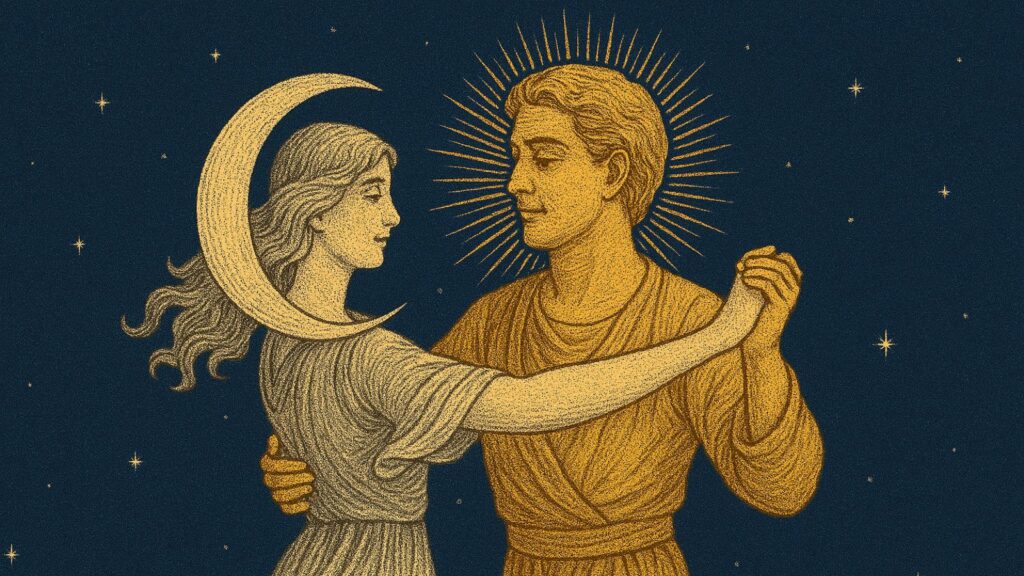The following is excerpted from Solar Revolution: Why Mankind Is on the Cusp of an Evolutionary Leap, recently published by Evolver Editions/North Atlantic Books.
Until recently astrophysicists believed that solar flares were a completely random phenomenon. But in recent years, patterns of solar flare cycles have been discovered using supercomputers. And what's amazing about these cycles is that they coincide with the periods in the Mayan calendar.
In addition to the Tzolkin calendar, which consisted of 260 days, the Mayans also had the Haab, whose 360 days and 5 so-called "nameless" days make it essentially the same as the modern lunar calendar. The Haab was mainly used to determine the most propitious time for planting and harvesting. Another Mayan calendar, known as the Long Count, is based on astronomical calculations of the solar year, and in terms of our calendar extends from 3114 BC to December 21, 2012 — which is also the end date of the Tzolkin calendar.
Inasmuch as the Tzolkin (like the I Ching and Kabbala) describes an intermeshing of cosmic constellations and eras of consciousness, one possible explanation for the mysterious and abrupt end of the Mayan calendar is that the Mayans believed that on December 21, 2012, a consciousness-changing event would transpire that would be of such magnitude that it was pointless to make any calculations beyond that threshold. On the other hand, it is also possible that they understood this date to be the epicenter of a cyclical change with transformative effects that would develop over a period of time, ultimately leading to a transformation of planetary consciousness and civilization that was beyond their capacity to express in stone and symbol.
From the Mayan perspective, it is possible that after the culmination of this epochal shift, neither the movements of the heavenly bodies nor the course of life on Earth would be the way they were before — a prophecy that has provoked a mixture of dread and anticipation ever since people first heard about it. And this in turn may well prompt you to ask yourself fundamental questions such as these: What will become of us? What will the explosive power of this transformation feel like? Will it feel threatening — or will it bring salvation?
For many years now, even the most hard-boiled scientists have come under the sway of these predictions, for there is overwhelming evidence that the time frames of the Mayan myths and our astrophysical prognostications coincide. In point of fact, a comparison of the solar flare activity in the Tzolkin and Gregorian calendars clearly shows that something very unusual may occur on December 21, 2012, or in the time after it. This is also confirmed by a NASA report, which warns that a "perfect storm" could penetrate the Earth's magnetic field if solar flares reach the level of the solar storm of 1859 (known as the Carrington event), whether during the spring or autumn equinox of 2012, or at another time.
The Earth's orientation at certain times may make it particularly vulnerable to particle bombardment. In any event, we are currently experiencing an increase in solar activity, along with a weakening of the Earth's electromagnetic fields — and a weakening, also, of the heliosphere, the protective sheath of energy put out by the Sun. This means that our planet is becoming evermore susceptible to the transformative effects of cosmic radiation and solar winds. The Mayans' focus on December 21, 2012, could be similar to the prediction a physician might make when choosing a due date in a pregnancy: the birth is not necessarily going to happen exactly on that day but is almost certain to happen at some point around it.
The Carrington event refers to an extremely powerful solar storm that was observed in 1859 by British astronomer Richard Carrington. It had far-reaching effects, such as the northern lights being visible from the Rocky Mountains to Cuba (which is not normally the case) and the collapse of the telegraph system. This so-called white-light event is the strongest known event of this kind. The Carrington event occurred without warning in the middle of an average solar activity cycle and had a powerful effect on the Earth.
According to the NASA report, far more severe eruptions than those of the Carrington event may be in store for us. And in view of this fact, the lack of awareness of this threat on the part of governments and the general public is mystifying.
However, the NASA report may change all that, since it warns that millions may perish during a massive solar-storm event. NASA says this would genuinely be the mother of all cataclysms — the absolutely worst-case scenario. Whether it happens on the exact date of the 2012 winter solstice or in the following period, such an event would be devastating because of our modern dependence on artificial technologies and vast supply lines that deliver goods each day to our stores and supermarkets.
Comparable albeit weaker solar storms have wreaked havoc in recent memory as well. In 1989 a solar storm knocked out power in the entire province of Quebec, resulting in the total disruption of everyday life. Computer systems, traffic signals, and mobile phones were disabled, and the province was on the verge of chaos. This incident showed that normal daily life simply grinds to a halt in the face of a massive power outage. Elevators were stuck, the entire province was plunged into darkness at nightfall, and all airplane flights were cancelled because the province's control towers had no data.
A similar event occurred in Sweden in 2003, resulting in a sudden power failure. It later emerged that a solar storm had knocked out the country's electrical grid.
These two events provided a frightening taste of the destruction, chaos, and hysteria that an even more severe geomagnetic event could wreak on our cities.
It is still a mystery how the Mayans were able to create calendars that could forecast astronomical events, such as the orbits of Venus and other planets, so accurately. It is likewise unclear what will happen in the period after the Mayan calendar breaks off. Many modern thinkers and visionaries, after studying the Mayan fascination with this mysterious threshold, have offered their own interpretation of what this event may mean for humanity and the Earth: As we enter the next age by passing through the solstice portal on December 21, 2012, a new light will shine on the Earth and will usher in a new era. Such an interpretation has also been offered by contemporary Mayans and followers of other indigenous cultures with prophecies about this time.
But what "light" are these visionaries and contemporary Mayans referring to? Is this an allusion to what Carrington termed a white-light event? Also, what do the Mayans, other indigenous people like the Hopi of Arizona, along with many visionaries, mean by a "new era"? From a study of the Popol Vuh and other sources, it seems clear that the Classic-period Mayans were not only anticipating an event in nature, but also — and above all — envisioning a transition that would affect the spiritual dimension of life. But then where exactly do astrophysics and myth intersect in such a situation? In our rational culture, do we even have the capacity to consider a spiritual reading to be plausible?
In Western culture, we tend to put far more faith in quantifiable facts that can be proven empirically than in observations made by other cultures — despite the fact that the Mayans even predicted the demise of their own civilization. Nevertheless, the correlation between solar activity and human behavior has been scientifically proven. This issue formed the subject of the highly regarded bestseller The Mayan Prophecies, by two Canadian authors, Maurice Cotterell and Adrian Gilbert. The Mayan Prophecies demonstrates the undeniable association between solar cycles and the rise and fall of kingdoms. Cotterell and Gilbert found a direct temporal association between specific solar activity cycles and political changes, from the Babylonians to the Mayans to the Romans.
An important point in this regard is made by José Argüelles in his study of the Mayan calendar, in which he discusses the significance of the Sun for the Mayans. Apparently the Mayans knew that our Sun is one of many celestial bodies and that it orbits around other suns. While on a literal level, there is no evidence that the Mayans understood that the Earth orbited around the Sun, on a symbolic level, they understood that all suns in the universe rotate around a center, namely the Hunab-Ku, or "heart of the cosmos."
According to José Argüelles's interpretation of the Mayan calendar in The Mayan Factor, Hunab-Ku, the enormous black hole at the center of our Milky Way galaxy, will subject the human race to an immense "Galactic Synchronization Beam," as Argüelles termed it, around the year 2012. In the interest of exploring this theory I will now discuss the galactic system in a bit more detail.
The Mayan observation that our galaxy contains a "central Sun" is accurate in light of current scientific knowledge. Astrophysicists refer to this phenomenon as a black hole, an entity that is thought to be located at the center of our galaxy and around which our entire solar system orbits. One such orbit takes a staggering 225 million years.
In recent years an exceptionally large amount of activity has been observed in this center which, to the consternation of scientists, does not square with their current picture of the universe. One manifestation of this phenomenon is radiation that has been detected at increasingly short intervals and that "is directed at the Earth like car headlights." This radiation, which is referred to as gamma ray bursts (GRBs), chiefly originates in the farthest reaches of our galactic center (i.e., from the black hole).
Here too the scientific data and visionary interpretations of the Mayan prophecies seem to agree. Argüelles described a "Galactic Synchronization Beam" that is emitted by the central Sun at certain times and affects the Earth's electromagnetic environment and our level of background radiation, spurring evolutionary changes and mutations. This beam also calibrates, according to this hypothesis, the mental and psychic existence of human beings by setting off vibrations in them that are transmitted via the Earth and the Sun, and that are emitted by the central Sun, an enormous black hole or Hunab-Ku.
Esoteric though this hypothesis may sound, it is confirmed by the findings of modern astrophysics. During a solar storm, massive amounts of gases known as plasma are emitted from the solar corona, which is the outer layer of the solar atmosphere and is visible at sundown as a pearly, faint halo extending a great distance. These "mass coronal projections" (as experts call them) spew hot plasma into space at speeds amounting to millions of miles per hour. But unfortunately for us earthlings, the particles that compose hot solar plasma carry an electrical charge, and if these particles enter the Earth's atmosphere, they can provoke magnetic storms and polar lights — which in turn affect the geomagnetic field and thus all life on Earth, all the way down to the cellular level.
Far fetched though it may sound, we humans are extremely susceptible to cosmic electromagnetic forces and gamma radiation. Human DNA apparently exhibits a property that acts as an "antenna" for gamma radiation. Our DNA contains carbon crystals that react to radiation like a resonator. Moreover, all of the atomic elements of our DNA have the capacity to pick up electromagnetic energy like a radio antenna, whereas the carbon crystals amplify incoming electromagnetic signals, which is a mechanism we know from broadcasting technology.
And pretty much the same thing happens with our cells, whose structure enables them to receive electromagnetic signals from the cosmos. Furthermore the resonance frequencies of gamma ray bursts (GRBs) are the same as those of the elementary particles of our atoms, thus setting the stage for far-reaching changes in our bodies and brains that probably also include complete restructuring in both.
These are the factors that make the prospect of a consciousness-changing "synchronization beam," in alignment with Mayan calendrical wisdom, so Earth shattering from a scientific standpoint. A beam of radiation, emitted from the center of the Milky Way and synchronized with the solar cycles, could transform — in a sense, reencode — the double helix of our DNA.
The quantum physicist Brian Swimme became one of the first researchers to raise this possibility, when, in commenting on and expressing agreement with José Argüelles's theories, he stated that actions and worldviews (i.e., the mindsets of entire cultures) are determined by the properties of galactic tides whose code may have been received and transmitted by the Mayans both mathematically and symbologically. Swimme furthermore observed that, in the parlance of quantum physics, one could posit that an electrodynamic exchange occurs between solar electrons and human electrons.
These insights explain a number of phenomena that have long defied explanation based on mainstream medical concepts. For example, why is it that at certain periods the incidence of mental disorders that are not transmitted bacterially or virally increases? One possible explanation was formulated in 1963 by American physician Robert Becker of the Albert Einstein Hospital in New York. He demonstrated a direct correlation between mental disorders and cosmic events, in that the number of patients admitted to psychiatric hospitals was found to increase significantly during particularly severe solar eruptions. Based on his clinical work, Becker also reported that solar wind- magnetosphere interaction and extreme susceptibility of hospitalized psychiatric patients coincided down to the minute.
The conclusion that can be drawn from all the research findings in this sphere is as plausible as it is noteworthy: humankind is in the midst of a transformation process whose consequences are still very difficult to foretell. However there can be no doubt that this transformation involves far more than just a paradigm shift or the advent of new political systems, for it will affect every aspect, level, nook, and cranny of life and will catalyze a dynamic that will sweep before it all evolutions of all living things.
The advent of this cataclysmic event is concretely signaled numerous times in various aspects of Mayan culture. Making interpretations based on Mayan glyphs, theorists ranging from Argüelles to Cotterell and many others have proposed that the cyclical transition has a cathartic function: they speak in terms of "awakened human beings" who will carry out a "sacred mission" and will "cleanse the Earth" — and for whom a new consciousness and new form of civilization will be ushered in once we pass through the initiatory threshold represented by December 21, 2012.
Copyright © 2012 by Dieter Broers. Reprinted by permission of publisher.













